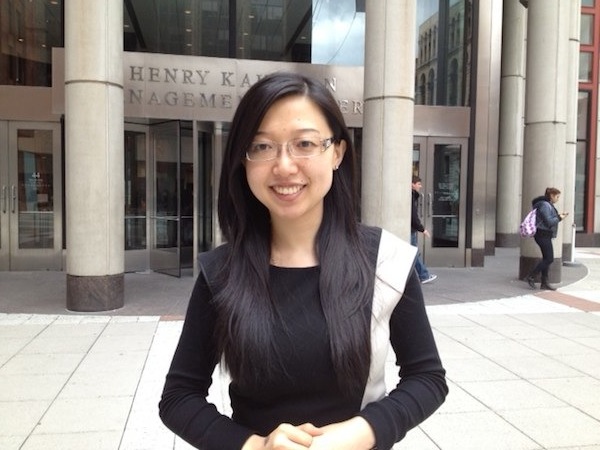If the logistics of working full time while attending New York University Stern’s part-time MBA program ever make Yue Xi feel like a pinball, perhaps it’s in a shiny way.
Outfitted with a 10-pound backpack housing her books and various pieces of Apple technology, Xi leaves the downtown Manhattan office of her employer at 5:20 p.m., then spends 20 minutes on the subway to reach NYU at Washington Square in Greenwich Village. She starts classes at 6 p.m., grabs dinner during a break, returns to the classroom until 9 p.m., and then begins her trek home to Queens, about an hour via train, to see her husband.
She also squeezes in Graduate Marketing Association meetings, which usually take place over brunch at restaurants. “I was thinking when I first started this program, I wouldn’t have time to socialize,” says Xi, a product manager for Serve from American Express. “But it’s having lunch, and I have to have lunch anyway.”
Xi is one of hundreds of thousands people ambitious students who are Juggling demanding jobs, evening classes and family life to get an MBA degree. Though full-time programs tend to grab the most media attention, most MBA students are part-timers who try to squeeze the degree into already heavy work and family schedules. The grind can be excruciating, especially for those who attempt to finish the degree in only two or three years.
‘MOST PART-TIMERS ARE PEOPLE LOOKING FOR AN ACADEMIC EXPERIENCE’
Aside from causing the need to generally bounce around a lot more, Stern’s part-time program differs from its full-time counterpart in another way: student goals. “Most [full-time students] are looking for a transition in career, a change in industry or function, and they want full immersion in the MBA experience,” says Isser Gallogly, assistant dean of MBA admissions. “Part-time is primarily for people looking for an academic experience. They like their job but want to move up or just be more proficient at their job.”
That trend applies to MBAs throughout the world as well. According to GMAC’s 2013 Alumni Perspectives Survey, 77 percent of part-time MBA grads and 70 percent of EMBA grads stayed in their existing jobs. Among full-time grads, only 12% of two-year MBA students and 19 percent of one-year MBA students continued with their existing jobs.“In general, part-time MBA programs attract more women and more older workers,” says Tracey Briggs, a GMAC spokeswoman. “Those considering part-time MBAs are more likely to plan on using employer sponsorship [for tuition].”
Xi’s club membership notwithstanding, part-time students tend to sacrifice participation in MBA clubs and other extra-curricular activities. According to GMAC’s 2011 and 2012 worldwide Prospective Students Survey, 55 percent of prospective full-time students say they want to join clubs, while only 30 percent of part-time applicants do.
“I think there’s a real advantage of full-time over part-time, because you are really in the trenches with other students,” says Anna Ivey, president of the Association of International Graduate Admissions Consultants, which is based in Santa Cruz, Calif. “For part-time students, there’s a limit to what you can get done in one day – you don’t have the same bandwidth to participate in activities.”






Questions about this article? Email us or leave a comment below.